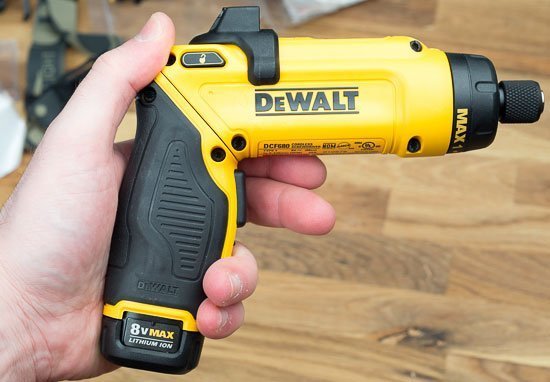Are you planning to grow plants in a 5-gallon pot but unsure of how much soil you’ll need? Don’t worry, we’ve got you covered!
Understanding the size and depth of your pot is crucial to ensure your plants thrive. In this article, we will guide you through the process of calculating the volume of soil needed, choosing the right type of soil, and filling the pot in layers to provide optimal conditions for your plants to grow.
We will also discuss the importance of leaving adequate space for watering and how to level and firm the soil properly. By following these steps, you can create a safe and healthy environment for your plants to flourish.
So let’s get started and make sure your 5-gallon pot is filled with the right amount of soil for successful gardening!
Quick Summary
- The volume of a 5-gallon pot is approximately 1,130 cubic inches, and approximately 750 cubic inches of potting mix is needed.
- Filling the pot in layers with soil helps with drainage and provides a stable environment for plants.
- Leaving room at the top of the pot allows for effective water penetration and prevents spillage.
- Overfilling the pot can hinder proper watering and lead to water runoff and root rot.
Understand the Size and Depth of Your 5-Gallon Pot
You’ll need to know the size and depth of your 5-gallon pot to determine how much soil you’ll need. Understanding pot dimensions is crucial for choosing the right potting mix and ensuring the health of your plants.
Start by measuring the diameter and height of your pot. Most 5-gallon pots have a diameter of about 12 inches and a height of around 10 inches. Once you have these measurements, you can calculate the volume of the pot.
The formula for calculating the volume of a cylinder is V = πr^2h, where V is the volume, π is approximately 3.14, r is the radius, and h is the height. In this case, the radius would be half of the diameter, so 6 inches. Plugging these values into the formula, you’ll find that the volume of your 5-gallon pot is approximately 1,130 cubic inches.
Now that you know the volume of your pot, you can determine how much soil you’ll need. A general rule of thumb is to fill the pot with about 2/3 soil, leaving room at the top for watering. So, for a 5-gallon pot, you’ll need approximately 750 cubic inches of potting mix.
Choosing the right potting mix is also important for the health of your plants. Look for a mix that is specifically formulated for containers and has good drainage properties. This will ensure that your plants receive adequate water and nutrients while preventing root rot.
Understanding the dimensions of your 5-gallon pot is essential for determining how much soil you’ll need. Measure the diameter and height of your pot, calculate the volume, and use the general guideline of filling the pot 2/3 full with potting mix. By choosing the right potting mix, you’ll create a healthy environment for your plants to thrive.
Calculate the Volume of Soil Needed
To determine the amount of soil required, it’s essential to calculate the volume needed for a 5-gallon container. Calculating the soil volume is crucial to ensure your plants have enough space to grow healthy and strong. Here’s a simple way to determine the potting soil quantity you’ll need:
| Measurement | Diameter (inches) | Height (inches) | Volume (cubic inches) |
|---|---|---|---|
| Pot Size | 12 | 10 | 1,884 |
First, measure the diameter of your 5-gallon pot, which is typically around 12 inches. Next, measure the height of the pot, which is usually around 10 inches. To calculate the volume, use the formula: Volume = π (radius)^2 height, where the radius is half the diameter. In this case, the radius is 6 inches. Plug these values into the formula, and you’ll find that the volume of soil needed for a 5-gallon pot is approximately 1,884 cubic inches.
Knowing the amount of soil required ensures your plants have enough room to develop a healthy root system. It’s important to provide adequate space for their roots to grow and access the necessary nutrients. By determining the potting soil quantity accurately, you can promote the optimal growth and well-being of your plants.
Choose the Right Type of Soil
When choosing the right type of soil for your plants, it’s important to opt for a high-quality potting mix. This will ensure that your plants receive the necessary nutrients and moisture for healthy growth.
Additionally, consider adding amendments tailored to the specific needs of your plants, such as organic matter or fertilizers, to further enhance their overall health and productivity.
Opt for a High-Quality Potting Mix
Choosing a high-quality potting mix ensures optimal soil conditions for your 5-gallon pot. When it comes to container gardening, using the best potting mix is crucial for the health and safety of your plants. A high-quality potting mix offers several benefits, such as improved drainage, adequate aeration, and essential nutrients for your plants’ growth. It helps prevent waterlogged soil, which can lead to root rot and other diseases. Additionally, a good potting mix promotes root development and provides a stable environment for your plants to thrive. To ensure you’re using a high-quality potting mix, look for one that is specifically formulated for container gardening. It should contain a blend of organic materials, such as compost, peat moss, and perlite. Remember, investing in a good potting mix will ultimately contribute to the success of your gardening endeavors.
| Benefits of a High-Quality Potting Mix | Best Potting Mix for Container Gardening |
|---|---|
| Improved drainage | Compost |
| Adequate aeration | Peat moss |
| Essential nutrients | Perlite |
Consider Adding Amendments for Specific Plants
Enhance your plant’s growth and overall health by considering the addition of specific amendments. Adding organic matter to your potting mix can provide numerous benefits for your plants. It improves soil structure, enhances water retention, and promotes nutrient availability. You can add compost, well-rotted manure, or peat moss to increase the organic matter content. These amendments will enrich the soil and create a favorable environment for your plants to thrive.
In addition to adding organic matter, it’s crucial to test the soil pH for the success of your plants. Different plants have different pH requirements, and it’s important to ensure that your potting mix matches those requirements. You can use a pH testing kit to determine the pH level of your soil. If the pH is not suitable for your specific plants, you can adjust it by adding amendments such as lime to raise the pH or sulfur to lower it.
By considering these amendments and testing the soil pH, you can create an optimal growing environment for your plants and promote their health and vitality.
Fill the Pot with Soil in Layers
To ensure proper drainage and optimal plant growth, it’s best to fill the 5-gallon pot with soil in layers. This technique not only helps with drainage but also provides a stable and nutrient-rich environment for your plants. When filling the pot, it’s important to consider the specific needs of your plants and choose the right type of soil.
To begin, place a layer of small rocks or gravel at the bottom of the pot. This will create a barrier between the soil and the drainage holes, preventing them from getting clogged. Next, add a layer of potting soil, filling the pot about one-third of the way. This will provide a solid base for your plants.
Now, it’s time to add any necessary amendments or fertilizers. Consult a gardening expert or read the instructions on the package to determine the appropriate amount and type of amendments for your specific plants. Once the amendments are added, fill the pot with more potting soil, leaving enough space for the plants.
When watering your plants, it’s important to use the right technique. Avoid overwatering by watering deeply but infrequently. This will encourage the roots to grow deeper and establish a stronger foundation. Use the table below as a guide for watering strategies:
| Watering Strategy | Frequency |
|---|---|
| Water deeply | Every 7-10 days |
| Check soil moisture | Before watering |
| Adjust as needed | Depending on plants |
By following these filling techniques and watering strategies, you’ll create a safe and nurturing environment for your plants to thrive.
Leave Adequate Space for Watering
When it comes to leaving adequate space for watering, it’s crucial to avoid overfilling the pot. By not filling it to the brim with soil, you allow room for water to penetrate the soil effectively.
Overfilling can lead to water runoff and hinder proper absorption, so make sure to leave enough space for the water to reach the roots of your plants.
Avoid Overfilling the Pot
Don’t cram too much soil into your 5-gallon pot, or your plants might suffocate and fail to thrive. It’s important to avoid overfilling the pot to ensure the well-being of your plants.
By leaving some space, you’re not only preventing spillage but also allowing room for proper watering. Overfilling can lead to water running off and not being absorbed by the soil, which can result in root rot and other water-related issues.
Additionally, too much soil can compact and become dense, restricting oxygen flow to the roots. This can hinder root growth and nutrient absorption, ultimately stunting the plant’s growth.
So, remember to give your plants some breathing space by not overfilling the pot and ensuring their healthy development.
Leave Room for Water to Penetrate the Soil
Make sure there’s enough space in your container for water to easily soak into the soil and nourish your plants. This is crucial for successful watering techniques and the overall health of your plants.
Proper drainage is important because it prevents water from pooling at the bottom of the pot, which can lead to root rot and other plant diseases. When you overfill the pot with soil, there’s not enough room for water to penetrate the soil effectively. This can result in water sitting on top of the soil and not reaching the roots where it’s needed.
By leaving room for water to penetrate the soil, you ensure that your plants receive the proper amount of moisture and nutrients they require for optimal growth. So remember, don’t overfill your pot and prioritize proper drainage for the well-being of your plants.
Level and Firm the Soil
To achieve optimal plant growth, it’s important to level and firm the soil in a 5 gallon pot. Properly compacting the soil ensures that the plant roots have a stable foundation to grow and thrive. Here are some tips for compacting the soil and understanding the importance of soil density:
-
Use a trowel or your hands to level the soil in the pot. Make sure it’s evenly spread and there aren’t any lumps or clumps that could disrupt the plant’s growth.
-
Press down on the soil gently but firmly to create a denser surface. This’ll prevent the soil from shifting or settling too much, providing stability for the plant.
-
Avoid overcompacting the soil, as this can lead to poor water drainage and oxygen circulation. The goal is to achieve a balance between density and porosity.
-
Regularly check the soil density by lightly pressing your finger into the soil. If it feels too compacted, gently loosen it with a fork or trowel to improve aeration.
Ensuring proper soil density is crucial for the health and safety of your plants. By following these tips, you can create an ideal environment for your plants to grow and flourish in a 5 gallon pot.
Plant Your Seeds or Seedlings
Now you’re ready to get your hands dirty and start planting your seeds or seedlings in your 5-gallon container. Planting techniques are crucial to ensure the success of your plants.
First, make sure to dig a hole in the center of the pot that’s deep enough to accommodate the root system of your seeds or seedlings. Gently remove the plant from its nursery container, being careful not to damage the delicate roots. Place it in the hole and fill around it with the soil you prepared earlier. Press the soil firmly to eliminate any air pockets and provide stability for your plant.
Watering is an essential part of the planting process. After planting, thoroughly water the soil to help settle it around the roots. Be sure not to overwater, as this can lead to root rot. A good rule of thumb is to water until you see water draining out of the bottom of the pot. This ensures that the entire root system is adequately hydrated.
To promote healthy growth, it’s important to water your plants regularly. Check the moisture level of the soil by inserting your finger about an inch deep. If it feels dry, it’s time to water. Avoid watering the foliage, as this can promote disease. Instead, focus on watering the base of the plant, allowing the water to soak into the soil.
By following these planting techniques and watering tips, you’ll give your seeds or seedlings the best chance for success in your 5-gallon container. Happy gardening!
Monitor and Adjust the Soil Level as Needed
Keep an eye on the soil level and make adjustments if necessary to ensure optimal growing conditions in your 5-gallon container. Properly adjusting soil levels is crucial for the health and growth of your plants. Here are three important reasons why you should pay attention to the depth of your soil:
-
Promote root development: Maintaining the right soil depth allows room for the roots to grow and spread. This ensures that your plants can access sufficient water and nutrients, leading to healthier and stronger plants.
-
Prevent waterlogging: If the soil level is too high, it can lead to waterlogging, where excess water accumulates and suffocates the roots. This can result in root rot and the eventual death of your plants. By regularly monitoring and adjusting the soil level, you can prevent such water-related issues.
-
Enhance stability: Having an appropriate soil depth helps anchor your plants firmly in the container. This is especially important for tall or top-heavy plants that may be more prone to falling over. By maintaining the right soil depth, you provide stability to your plants and reduce the risk of accidents or damage.
By understanding the importance of proper soil depth and regularly adjusting the soil levels, you can create a safe and optimal environment for your plants to thrive in their 5-gallon pots.
Frequently Asked Questions
Can I use any type of soil for a 5-gallon pot?
Yes, you can use any type of soil for a 5-gallon pot. However, it’s best to use a well-draining soil mix with good organic matter. To ensure nutrient availability, consider using a slow-release fertilizer or adding compost.
How often should I water a plant in a 5-gallon pot?
Water your plant in a 5-gallon pot every 3-4 days to promote healthy plant growth. Overwatering can lead to root rot, so be sure to check the soil moisture before watering.
Is it necessary to use a specific type of fertilizer for plants in a 5-gallon pot?
It’s important to use specific fertilizers for plants in a 5-gallon pot. Different soil types may require different nutrients, so choose a fertilizer that suits your plant’s needs for optimal growth and safety.
Should I add any amendments to the soil before planting in a 5-gallon pot?
Before planting in a 5-gallon pot, it’s important to add amendments to the soil. This will enhance nutrient availability, water retention, and overall plant health. Soil amendments provide numerous benefits for your plants in 5-gallon pots.
How long does it usually take for plants in a 5-gallon pot to reach full maturity?
For optimal plant growth rate and to ensure that your plants receive the optimal nutrients, it is important to provide them with a 5-gallon pot and regularly monitor their growth for full maturity.
Conclusion
So there you have it! Now you know how much soil you need for your 5-gallon pot. By understanding the size and depth of your pot and calculating the volume of soil needed, you can ensure your plants have enough space to grow and thrive. Remember to leave adequate space for watering, level and firm the soil, and monitor and adjust the soil level as needed. With these tips, you’ll be on your way to successful gardening in no time!







